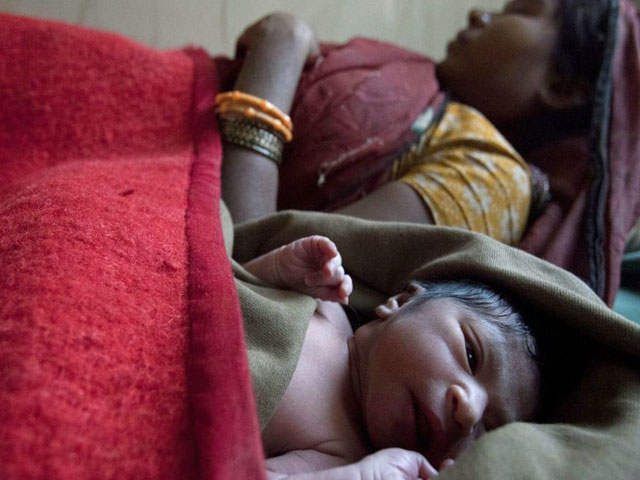
Goa’s healthy babies
The infant mortality rate is an indicator of an economy’s health – not always its wealth – its administrative capacity and its basic humanity.
Snapchat CEO called India 'a poor country' and now Indians are boycotting the app
Goa’s infant mortality rate, at nine, is India’s lowest. That of Uttar Pradesh, at 46, is third worst (Madhya Pradesh is the worst at 50, Assam next at 47, and Odisha the same as Uttar Pradesh), according to a December 2016 latest available data.
Goa’s infant mortality rate is one better than the combined figure for Europe and Central Asia, where people tend to be richer. Uttar Pradesh’s is worse than conflict-ridden Yemen (34) and the same as bankrupt Zimbabwe.
A selection of other indicators from the Indian national health data reveals how backward Uttar Pradesh is in providing a favourable atmosphere for children. Goa provides its children with better healthcare and offers a more conducive home environment with clean air, water and toilets than Uttar Pradesh (and most states).
It is particularly striking that many indicators are better in rural Goa than in its urban areas: more women are literate, and fewer marry before the legal age. In Uttar Pradesh, it is the opposite. So, should Goa be what the rest of India aspires to, especially vast swathes of the north?
UP behind, but developing
Uttar Pradesh is far better off than it used to be on almost every parameter a decade ago. In 2005, the state’s infant mortality rate was 76, so the fall to 46 has been substantial. Goa, in contrast, fell from 16 to nine. While Goa remains one of India’s best places to live, its prosperity and well-being reveal some disquieting trends.
Poverty eradication challenge: Modi might have to eat his own words
First, consider Goa’s sex ratio. The good news is that Goa has more women than men, similar to a handful of states, including Kerala and Tamil Nadu. The bad news is that the trend is changing.
The sex ratio at birth, which indicates the situation in the last five years, reveals that fewer girls are now being born than boys (in Kerala, Goa’s close competitor for the top spot, on many development indicators, this is not the case). While sex ratios have improved over 10 years to 2015 in Goa, urban Goa is following the path of prosperous, urban areas elsewhere in India.
Urban South Goa’s sex ratio is now amongst India’s worst at 792 females per 1,000 males, as IndiaSpend analysis notes. Rural South Goa’s sex ratio, in contrast, is among India’s best at 1,409.
Second, while Goa children are generally well cared for, the health data also reveals that the proportion of children under five who were wasted – which means, low weight for height – in urban Goa doubled over 10 years to 2015. In rural Goa, the proportion of wasted children fell to 12 per cent from 17 per cent over the same period. The proportion of wasted children is urban South Goa is five times more than in rural North Goa. Overall, Goa witnessed a 57 per cent -point rise in wasting between 2005 and 2015.
This data implies that Goa, which once set health trends, is showing signs of adopting the worst practices prevalent in the India beyond its borders. To be sure, this does not mean that every Indian state follows the trends set by rich Goa and poor Uttar Pradesh.
20 million toilets built in two years: Indian PM
Nevertheless, these are outliers, and it is safe to say India’s rich and poor states are likely to follow trends in Goa and Uttar Pradesh, respectively.
Rise and fall
However, haphazardly, this may be playing out; India is undergoing a great levelling, with inequality accompanying the general rise in prosperity. This is equally true for economic and governance indicators, as it is for the social indicators we discussed.
More cities are rising, and more Indians are flocking to them, although these cities are becoming more unliveable than before. The worst characteristics of the poorest, most poorly administered states are percolating down to the richest states, where administrative capabilities have noticeably deteriorated.
That is certainly true of Goa, once known for its crime-free and corruption-free life and lush landscape, now ravaged by mining and construction. From crime to illegal construction to political patronage of criminal activity, the state shows distinct signs of having borrowed the worst ideas from states such as Uttar Pradesh.
The extent of corruption in Goa was revealed in 2015 when the government declared the coconut palm was no longer considered a tree, which meant that builders would no longer need permission to cut it down, hastening Goa’s haphazard concretisation.
The decision was rescinded after two years and great damage, but the larger point is clear: whether in health or governance, Goa is sliding, and Uttar Pradesh is improving. India’s future appears to lie somewhere in between.
This story originally appeared on Scroll.in.
1731570357-0/elon-musk-(1)1731570357-0-405x300.webp)
-(1)1717678110-0/Kendrick-(1)-(1)1717678110-0-165x106.webp)





1732445375-0/Untitled-design-(9)1732445375-0-270x192.webp)


1732428810-0/Copy-of-Untitled-(3)1732428810-0-270x192.webp)






COMMENTS
Comments are moderated and generally will be posted if they are on-topic and not abusive.
For more information, please see our Comments FAQ